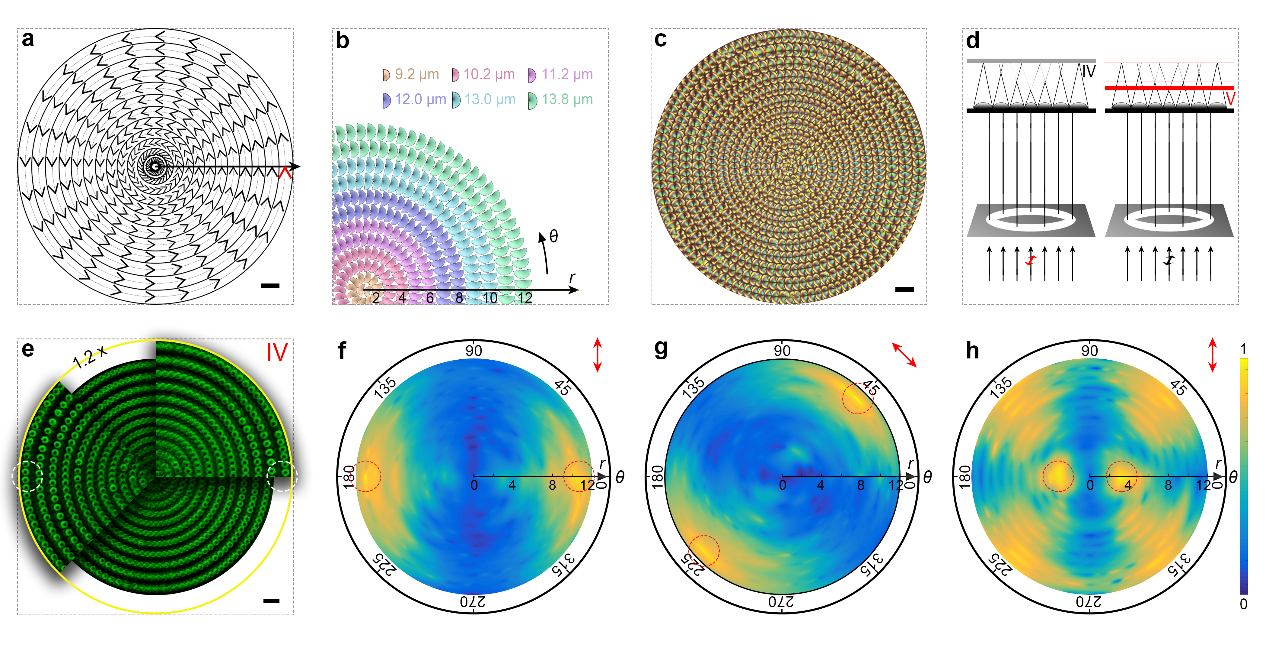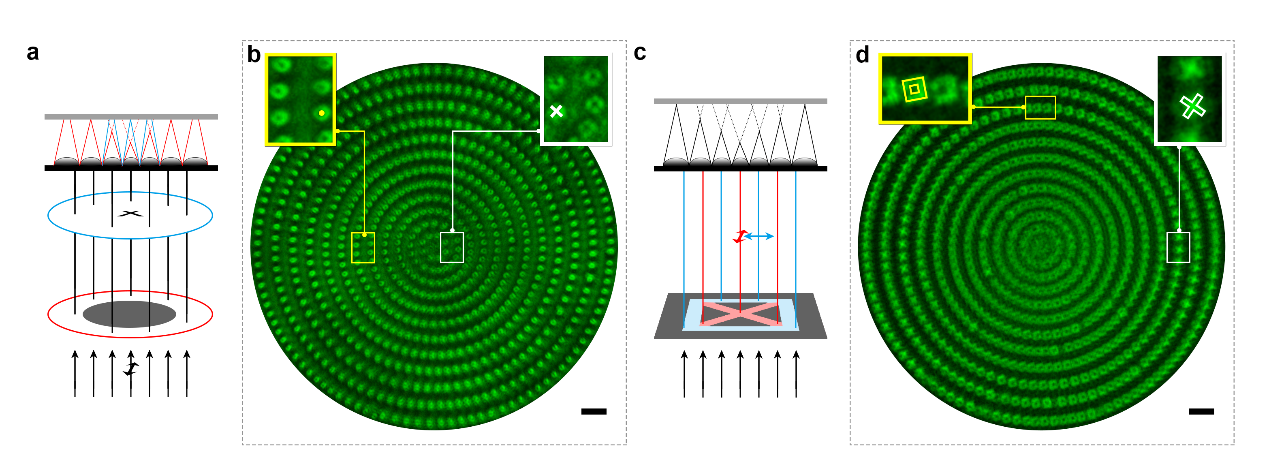Recently, Prof. Wei Hu and Prof. Yanqing Lu’s team of our department made progress in realizing four-dimensional(4D) visual imaging (three-dimensional space along with polarization) by means of self-assembled asymmetry microlens. Their manuscript titled as Self-assembled asymmetric microlenses for four-dimensional visual imaging is published online on ACS Nano on 20th Novemble(ACS Nano, 2019, 10.1021/acsnano.9b07104).
Visual imaging is of great importance in scientific research and industrial technology applications. To obtain target’s three-dimensional(3D) spatial information, expensive testing equipment and sophisticated operations are usually required. On the other hand, polarization, another physical dimension of light, also carries privileged information of object’s features, which plays an important role in material characterization, remote sensing, biology navigation, and intraspecific interaction. It has always been a technical challenge that many eagerly demand to be overcome in correlation domain to realize synchronous spatial and polarization probing with simple and effective approaches. As the spatial refractive index distribution can be dynamically modulated, liquid crystal(LC) lens with tunable focal lengths is achievable. Due to the polarization sensitivity induced by its birefringence, the image quality of LC lens is influenced to some degree. However, if we take advantage of such feature in turn, polarization probing can be realized.
For this project, our research team proposed a solution based on self-assembled asymmetric liquid crystal microlenses after previous research on the manipulation of smectic mesoscopic hierarchical liquid crystal superstructures(Adv. Mater. 2017, 29, 1606671). On the basis of the induced photopattern of LC’s alignment, the curvature of the LC layer during the process of self-assembling of distorted toric focal conic domain(d-TFCD) can be modulated. Also, distortion-controllable microlens can be constructed and finally the phase profile as well as symmetry-breaking properties can be obtained. Depending on the tunability of distortion direction, it can be employed to detect polarization owing to its incident polarization selective imaging ability. By presetting the sizes of photo-alignment units, the focal lengths of microlens can be precisely manipulated. We designed and synthesized a microlens array with radially increased sizes and azimuthally varied orientations. Both the depth and polarization information of the target can be extracted in a single snapshot, via referring to the coordinates of the clearest images. Along with the two-dimensional(2D) imaging ability of microlens itself, 4D visual imaging of targets is realized. Meanwhile, the polarization selectivity and multifocal functionality of LC microlens enable it to multiplex/ demultiplex depth and polarization information, which can be applied in optical communication.

Figure1:Extracting 4D information with multisize and orientation d-TFCDs (a) Photo-alignment pattern;(b)Schematic of well-arranged d-TFCDs;
(c) Polarized optical microscope texture of the sample;(d) Schematic illustration of polarization-selective and multifocal imaging;
(e)Imaging pattern; (f-h)Image definition maps.

Figure 2: Depth/polarization information demultiplexing(a) Schematic illustration of dual-object imaging;(b) Dual-object imaging pattern;(c) Schematic illustration of dual-polarization imaging;(d) Dual-polarization imaging pattern.
This work puts forward a new approach of 4D visual imaging based on self-assembled asymmetric liquid crystal microlenses. Herein, the phase profile and symmetry-breaking properties of LC microlens depend on precisely induced photopattern and benefit from the combination of top-down photo-alignment and bottom-up self-assemble. This scheme demonstrates the flexibility of design and simplicity for synthesis. Besides, the flat structure of LC lens array is in favor of the miniaturization and integration of devices, which is consistent with the trend of photon technology development. This could significantly improve the performance of present photon devices and hopefully could stimulate more creative applications.
Dr. Lingling Ma, an associate researcher of College of Engineering and Applied Science in Nanjing University, and Saibo Wu, a doctoral student enrolled in 2019, are joint first authors of the paper. Prof. Wei Hu and Prof. Yanqing Lu are co-corresponding authors. Postgraduate Chao Liu, associate researcher Dr. Peng Chen of our department, Dr. Hao Qian of Nanjing University of Technology, Dr. Yandong Wang of Suzhou University, Prof. Lifeng Chi all contribute a lot to the paper. This research is funded by the National Key Research and Development Program of China, the National Natural Science Foundation of China, National Natural Science Funds for Distinguished Young Scholar, the Distinguished Young Scholars Fund of Jiangsu Province, the Tang Scholar program, and the Scientific Research Foundation of Graduate School of Nanjing University. We also appreciate the support from Collaborative Innovation Center of Advanced Microstructures, the Ten, Hundred and Thousand Project of Nanjing University, and the Fundamental Research Funds for the Central Universities.
(Submitted by Wei Hu and Yanqing Lu’s Groups)

